|
Amazon’s Q2 2014 earnings report brought a triple whammy of disappointment to impatient investors:
Three chronic concerns underscore growing investor unease with Amazon’s management priorities:
Jeff Bezos’ Guiding Principles Bezos built Amazon on the foundation of being stubborn on vision, but flexible on details. And no CEO has ever been so clear in articulating his corporate vision as Jeff Bezos, who laid out the company’s guiding principles in his first letter to shareholders in 1997. In that document (which Amazon has included in its Annual Report every year since), Bezos signaled his intent to build a company focused on long-term growth, bold action, market leadership and customer satisfaction. As if anticipating the current criticism, in 1997, Bezos cautioned: “Because of our emphasis on the long term, we may make decisions and weigh tradeoffs differently than some companies.” He has been admirably, and to some, frustratingly true to that vision ever since. In this context, let’s examine each of the sources of investor angst in turn. The time is long overdue for the company to deliver profits Echoing the concerns of many analysts, Michael Yoshikami, CEO of Destination Wealth Management (which sold its stake in Amazon last year) recently noted: “Most companies with the kind of gross revenue Amazon has are not posting these kind of losses.” Well that’s an understatement! To put Amazon’s recent financial performance in perspective, consider the figure below, which displays revenue and net income since the company’s inception. There should be little doubt that Amazon has been reinvesting operating profits to fuel future growth. And its growth rate has been extraordinary. From 1995 through 2013, Amazon has grown its topline at a compound annual growth rate of 94%. Granted, growth rates have slowed as the company has bulked up, but Amazon is on track to be the fastest company in history to reach $100 billion in sales. With current revenues of >$75 billion, Amazon reported 23% topline growth on a year-on-year basis in its Q2 results. As noted below, comparing Amazon to companies that are within +/-10% of its current revenues, Amazon’s topline growth rate is in a class by itself – as is its lack of profitability! In its relentless pursuit of growth, Amazon has become over-extended Amazon’s profitability has undoubtedly been dragged down by its frenetic pace of investment in new businesses. As Jeff Bezos noted in his official statement accompanying the company’s Q2 earnings report: We’ve recently introduced Sunday delivery coverage to 25% of the U.S. population, launched European cross-border Two-Day Delivery for Prime, launched Prime Music with over one million songs, created three original kids TV series, added world-class parental controls to Fire TV with FreeTime, and launched Kindle Unlimited, an eBook subscription service. For our AWS customers we launched Amazon Zocalo, T2 instances, an SSD-backed EBS volume, Amazon Cognito, Amazon Mobile Analytics, and the AWS Mobile SDK, and we substantially reduced prices. And today customers all over the U.S. will begin receiving their new Fire phones — including Firefly, Dynamic Perspective, and one full year of Prime — we can’t wait to get them in customers’ hands. Each of these ventures requires startup capital that may take years (if ever) to recoup. As Amazon’s cash from operations has grown over time, it has accelerated its investment in new business development, venturing further afield from core ecommerce retailing to compete in the markets for tablets, smartphones, cloud computing, streaming media and original television content. S&P Capital IQ analyst Tuna Amobi (who has a sell rating on Amazon) summed up the sentiment of many in noting: “There’s a lot of stuff they’re doing that’s questionable. There’s nothing wrong with spending to diversify your business, but it has to be in a focused manner as opposed to throwing spaghetti on the wall and seeing what sticks.” The company’s obsessive secrecy manifests a blatant disregard for shareholders, which stands in stark contrast to its customer attentiveness From the company’s founding, Jeff Bezos has been unwilling to divulge financial performance at the business unit level. This has set up a cat-and-mouse game between Amazon executives and industry analysts striving to learn more about company operations. For example, analysts have struggled for years to gain more insight into how many Prime customers Amazon has enrolled, or how many Kindles, Fires, hardcovers or ebooks it has sold, or how much AWS revenue it has booked or how much investment it has made in streaming video. But Jeff Bezos doesn’t like to get specific with numbers. For example, When Bezos took the stage in June to announce the launch of the Amazon Fire smartphone, during his 90-minute presentation, he took the opportunity to drop hints about the company’s broad-based business impact using the deliberately vague terminology: “tens of millions.” Here’s a sampling from his presentation:
Bezos’ catchphrase is reminiscent of astrophysicist Carl Sagan, who popularized public awareness of astronomy with his frequent reference to the “billions and billions” of stars in the intergalactic universe. The difference of course is that the phenomenon Sagan was referring to is truly unknowable, whereas Jeff Bezos knows precisely how individual components of his business are doing. But that’s for Bezos to know and others to guess. Care to speculate how many Kindles Amazon has actually sold? From Bezos’ opaque tease, the answer may be 20 million and growing or 220 million but declining. Granted, the SEC doesn’t require public companies to divulge such details to the investment community, but for a company whose market cap has been buoyed by shareholder trust, Amazon’s opacity has been testing investor patience. Every quarter, buy- and sell-side analysts join in a conference call with Tom Szkutak, Amazon’s CFO, and pepper him with questions about company operations. But Szkutak doggedly dodges each query; as exemplified by his replies during Amazon’s Q4 2013 analyst call: “I am sorry I can’t help you … you have to wait on that … In terms of the details, I can’t really give you a lot of color … you will have to stay tuned on that one … I can’t talk to the specifics of that … there is not a lot I can help you with there … I wouldn’t speculate what we would do or not do going forward … I wouldn’t speculate. We might or might not do in the future … if you look back at what we have done, you can’t expect that we might do [it] going forward … I wouldn’t want to speculate what they would or wouldn’t do related to pricing … it’s hard to tell, honestly. It’s hard to know … it’s very early … that’s really all I can say … I can’t comment.” At Amazon, every obfuscating quarterly conference call feels like Groundhog Day. What’s Next for Amazon? So Amazon is arguably guilty as charged of disappointing earnings, worrisome increases in business complexity and investment, compounded by a stubborn unwillingness to share more information about business operations. The market has clearly lost confidence; Amazon is currently trading 25% off its 2014 peak. Does the current market sentiment signal the need for a fundamental shift in Amazon’s overarching business vision, strategy or priorities? I don’t think so. Taking the long view, it is somewhat puzzling that investors have seemingly become so unnerved by Amazon’s recent business performance. There is nothing particularly new or different in Amazon’s business priorities, or in its operating results through the first half of 2014. Jeff Bezos is managing Amazon today exactly as he said he would 17 years ago, making good on his longstanding commitment to prioritize long-term growth and market leadership over short-term financial returns. As such, it shouldn’t be surprising that Amazon has only beat quarterly earnings estimates half the time over the past 20 reporting quarters. So why have investors suddenly become impatient? Admittedly, there are some headwinds of concern. To begin with, Amazon’s recent EPS misses have come in bunches – viz. 4 out of the last 5 quarters. Then too, some of Amazon’s current business development priorities – cloud computing and original video content development — have particularly high investment thresholds with inherently long paybacks. More generally, the law of large numbers is catching up with Amazon, making the required size of its investment bets and risks higher. Finally, as Amazon has moved farther afield into new business ventures, it has attracted new and stronger competitors. For example, AWS, Amazon’s industry-leading cloud computing business, is encountering fierce price competition from deep pocketed, committed players such as IBM, Microsoft and Google. So it shouldn’t be surprising that Amazon’s historically thin profit margins are under additional pressure. But strategic, growth-oriented companies who are able and willing to sustain new business development activity through cyclical business swings are often rewarded over the long term. As a case in point, Amazon’s relentless focus on new business development and market leadership has propelled its unprecedented long-term growth. Lest there be any doubt that Jeff Bezos is continuing to manage for long-term growth, consider the comparative business performance between Amazon and two of its major competitors: Walmart, the largest global retailer and IBM, a technology leader and fast follower in cloud computing. Where Do The Profits Go? As illustrated below, Amazon performed reasonably well in generating cash from business operations in 2013: 7.4% of revenues compared to 4.9% and 17.5% for Walmart and IBM respectively. What really distinguishes these three large enterprises is how each chooses to deploy their capital. Amazon spends far more of its cash from operations on R&D and Capex – the engines of growth – than Walmart or IBM. The payoff is in topline growth: 23% for Amazon vs. low single digit or negative for its competitors. In contrast, Walmart and IBM reward their shareholders with near term gratification in the form of dividends and stock buybacks (29% and 73% of cash from operations in 2013 for Walmart and IBM respectively). To understand the reason for these stark differences, it is worth repeating Jeff Bezos’ prescient comments in his 1997 letter to shareholders: “We will continue to make investment decisions in light of long-term market leadership considerations rather than short-term profitability considerations or short-term Wall Street reactions… Because of our emphasis on the long term, we may make decisions and weigh tradeoffs differently than some companies… We aren’t so bold as to claim that [we have] the “right” investment philosophy, but it’s ours, and we would be remiss if we weren’t clear in the approach we have taken and will continue to take.” Virtually every month, Amazon seems to announce yet another major new business venture. Recent examples include Amazon Fresh (groceries), Amazon Local (local services), Get It Now (same day delivery), Amazon Payments (online payments), streaming video and audio services, original content, Fire Smartphone, aggressive expansion in India, etc. Critics who have grown impatient with Amazon’s lack of profits may be underestimating the long gestation period required for new-to-world ventures to yield attractive returns. This was certainly the case with Amazon’s initial ecommerce business, and subsequent third party marketplaces and Kindle platform, which took as long as a decade to go from concept to profitable returns. This is not to suggest that Amazon hasn’t experienced its share of abject failures, including the following initiatives, which either were abandoned, written off or salvaged only via pricey, face-saving acquisitions:
It is also important to recognize that Amazon’s preference for long-term growth over short-term profits is a matter of strategic choice. Amazon could easily boost its EPS by throttling back Capex and R&D investments (at the expense of growth), whereas, it is unclear whether Walmart or IBM are capable of turbocharging their topline growth. Investors who expect Amazon to deliberately scale back its growth initiatives and/or raise prices to achieve short-term profits either don’t understand the company or lack the appetite for Jeff Bezos’ long-term vision. Amazon is positioning itself at the epicenter of multiple businesses with exceptionally strong growth potential – global ecommerce, streaming media, electronic payments, cloud computing, same-day delivery services, the South-Asian continent etc. It is neither in Amazon’s DNA or long-term interest to slow its pursuit of these opportunities. What could go wrong? Is Amazon an indomitable force, bound for world domination? Of course not. There are a number of factors that could sidetrack Amazon’s prodigious appetite for growth and market leadership. The biggest challenge is management risk associated with the growing complexity of Amazon’s global business endeavors. As noted earlier, Amazon chooses to operate with razor thin margins across its business portfolio, and as such, will have to execute flawlessly to maintain torrid growth without jeopardizing their balance sheet. This will require a deep bench of committed executive talent across the enterprise. As their Q3 2014 guidance perhaps presages, Amazon may hit a bad patch if a few of its strategic growth initiatives take longer to materialize, attract more vigorous competition and/or require considerably higher investment than anticipated. Such outcomes, as noted below, could set in motion a downward spiral in business performance that might require significant retrenchment. Amazon relies heavily on options-based compensation in its senior executive ranks, making the company vulnerable to prolonged softness in the stock market. Given its dependence on public markets to fuel aggressive organic growth and acquisitions, Amazon’s reticence and repeated opacity in dealing with the investment community is another risk factor. A growing chorus of analysts and shareholders has lost patience with what they view as the company’s arrogant disregard of shareholders. True, the company can point to its unusual candor in initially articulating its management philosophy and to the shareholder-friendly returns achieved over the past decade (~500% stock price appreciation from mid-2004 to mid-2014). But the public has short a memory span, and Amazon risks needlessly squandering shareholder trust by doggedly refusing to respond to questions regarding business line results or to provide a credible case for the company’s path to profitability. Another risk factor of course is Jeff Bezos himself. Few companies are as personified by their CEO as Amazon. Bezos’s eventual successor will obviously have some very big shoes to fill, with outsized management transition risk. But for the foreseeable future, with respect to Jeff Bezos’ guiding vision, don’t expect new news from Amazon. If you’re looking for hints on Amazon’s strategic blueprint for the years ahead, look no further than Bezos’ 1997 letter to shareholders excerpted below.
1 Comment
We’ve all been inspired by stories of brilliant entrepreneurs whose game-changing ideas sparked in humble settings — e.g. a garage (Steve Jobs), dorm room (Mark Zuckerberg) or Milanese coffee bar (Howard Schultz) — blossomed into market-leading global enterprises. A new generation of entrepreneurs is now building companies that reached $10 billion in market value in record time (Uber, Airbnb, WhatsApp), posing grave threats to established industries. It would appear that the traditional bases of competitive advantage that used to protect incumbent market leaders – scale, operational experience, brand image, customer base, distribution, and financial depth –- can no longer withstand the onslaught of upstart entrepreneurs. This was the theme of Malcolm Gladwell’s recent book, David and Goliath: Underdogs, Misfits and the Art of Battling Giants. In his retelling of the biblical tale of David and Goliath, Gladwell portrays David as a fearless, agile and resourceful fighter who defeats the dim-witted, over-confident and ponderous oaf, Goliath. Gladwell rebuts the common belief that David was an underdog. In this mismatch – and in a surprisingly large number of others – Gladwell asserts that leaders have liabilities that make them particularly vulnerable to brash upstarts. This should come as no surprise to students of business. History is replete with examples of profitable, market-leading corporations who were felled by smaller but more nimble and effective competitors. For example, when AT&T — the largest company in the US for much of the 20th century– failed to adapt to deregulation and the emergence of wireless technologies, it was forced to sell its dwindling assets for a fraction of its historical peak value to one of its former regional divisions. AT&T’s vulnerability as a ponderous, customer-abusing monopoly was bitingly captured in one of Lily Tomlin’s signature parodies, with the tagline: “We don’t care. We don’t have to. We’re the phone company!” GM, which also held the distinction of being the largest US corporation for decades declared bankruptcy in 2009, and only lives on today (in shrunken form) as the beneficiary of a taxpayer bailout. But GM’s management shortcomings are no laughing matter, as details of its willful disregard of fatal vehicle design flaws have recently come to light. Kodak serves as yet another example of how the mighty have fallen. The firm, which enjoyed photographic film industry leadership for over a century, peaking at a 90+% market share in the mid-1970’s, declared bankruptcy in 2012. Kodak is a poster child of Clayton Christensen’sdisruptive technology theory, which explains why large enterprises struggle to adopt innovations such as digital imaging. Are these isolated examples of bad management bringing down venerable institutions, or are market-leading corporations destined to be felled by disruptive upstarts, by aggressive attacks from traditional competitors, or by a combination of both? Conventional wisdom has increasingly tilted toward the latter: market leaders cannot sustain global competitive advantage over the long term. Take Apple as a case in point. A gloomy outlook has been predicted for the post-Steve Jobs enterprise by no less than a Nobel Prize-winning economist (Paul Krugman), one of the most influential business theorists of the last 50 years[i] (Clayton Christensen), a Wall Street Journal reporter and best-selling author (Yukari Kane), an SAP board member writing for Der Spiegel (Stefan Schulz) and 71% of respondents to a recent Bloomberg global survey who say that Apple has lost its cachet as an industry innovator. The reasoning behind these arguments that the mighty must fall is not limited to Apple, but stem from a broader belief that large enterprises inevitably lose their competitive advantages over time. But this viewpoint is not only flawed, but perversely could become a self-fulfilling prophecy of corporate failure. If management truly believes that long-term above-market profitable growthis impossible, the logical response is to protect and harvest current assets and customers for as long as possible. But such an approach — playing not to lose, as opposed to playing to win – only serves to hasten the decline of incumbent market leaders. The biblical Goliath may have been a ponderous oaf, but large enterprise CEO’s don’t have to be. Business Goliaths can continue to prosper if they maintain the same entrepreneurial spirit and adaptability that led to their success in the first place. Let’s explore the case of Apple as a case in point. On September 29, 2012, Apple reported record earnings, capping a remarkable three-year run during which the company grew revenues by 266%, profits by 406% and market capitalization by 280%. Already the most highly valued company in the world, few expected that Apple could continue its torrid growth rate forever. But as Apple’s margins and growth rate did begin to abate over the ensuing 18 months, many pundits declared this was a broader sign of the company’s expected erosion of competitive advantage, dooming Apple to average financial performance – or worse – going forward. For example, one of my esteemed colleagues at Columbia Business School shared this provocative point of view with MBA students: It’s very hard to dominate big global markets. Nobody has ever dominated electronic devices. Trust me, we’ve seen it in related industries for Sony, for Motorola and for Nokia. They’ve had nothing like the margins of Apple, and the margins of Apple have gone down by at least a third in the last 16 to 18 months. You can’t dominate a big market… Apple is going straight down the tubes! — Bruce Greenwald, Columbia Business School Why would a company that has repeatedly demonstrated extraordinary customer insight, innovation, design expertise, marketing prowess, high quality manufacturing and retailing excellence be headed “straight down the tubes?” I believe there are three fallacious arguments that underscore the belief that Apple, and indeed all market leaders, eventually must lose their competitive advantage and above-market financial performance over time:
This law posits the obvious mathematical property that as a company grows, the incremental revenue required to maintain above market growth becomes ever larger. For Apple, whose revenue is currently $175 billion, the challenge is indeed daunting. For example, consider what would be required for Apple to grow it’s topline by 10% over the coming year, which while still above market average, is still only one-third of the compound annual growth rate the company achieved over the past five years. Growth of this magnitude would require the equivalent of adding the total revenue from companies such as Southwest Airlines or General Mills or US Steel to Apple’s current topline. No mean feat! Or think of it another way. Apple-watchers have been keenly anticipating the launch of theiWatch, in the intriguing “wearable technology” category. Characteristically, Apple has not been the first-mover in this emerging technology (nor was it in portable music players, smartphones or tablets), as smartwatches from Samsung, Pebble and more recently Google have been on the market for a year or more. But let’s give Apple the benefit of the doubt based on past success and assume that it achieves 10 times the industry sales of smartwatches achieved in 2013 ($712 million). At an assumed iWatch price of $299, this translates into annual sales of 24 million devices, generating just over $7 billion in revenue. As long as we’re being generous, let’s assume that each consumer also buys an average of $50 in apps each year for their slick new iWatch, of which Apple would claim a 30% revenue share. That would add a paltry $360 million in additional revenue (albeit at high margins). But the point here is that if Apple’s ability to continue to outgrow the market requires upwards of $17 billion of new revenue (and even more in the years ahead), it will take more than the vaunted iWatch to get the job done.[ii] It will undoubtedly be difficult for Apple to outgrow the market over the long term. But is it impossible? Absolutely not! The most definitive study on this issue was undertaken by the Corporate Executive Board in their landmark study of long-term growth rates. The CEB examined the performance of over 400 US companies that have been on the Fortune 100 list over the past 50 years, along with 90 non-US companies of a similar size. The authors concluded that approximately 13% of the nearly 500 large companies studied have been able to outgrow the market average for up to 50 years. So while outperforming the market over the long-term is a notably uncommon achievement, it is far from a mathematical impossibility. So where might Apple find its next growth wave, if not from the iWatch? There are several large opportunities that Apple may exploit that could fuel another round of dramatic growth. Opportunities include:
Under any circumstances, the assertion that Apple cannot continue to outperform the market because of the “law” of large numbers is pure sophistry – a case of simple mathematics posing as strategic thinking. The law of competition A second argument for why Apple is destined to decline falls under the rubric, the law of competition. According to this “law,” Apple’s historically sky-high returns on invested capital (ROIC) must inevitably revert to average levels for the following reasons.
Many industry observers have also pointed to the loss of technological leadership in the smartphone/tablet market, and the four-year lag since the company introduced its last game-changing product (iPad) as further evidence of Apple’s inability to maintain the competitive advantage required to sustain high margins (see Exhibit 2). But the inexorability of the law of competition applied to Apple and other highly profitable corporations is fundamentally flawed on two grounds:
In fact, the [current smartwatches] do the opposite: they re-enforce all our old assumptions about the form, which is that you take your phone screen, make it small and stick it on your wrist. All I can think when I see them is: “Beam me up, Scotty!” And where’s the joy — or the desire — in that?… Admittedly, this has entirely to do with aesthetics, not functionality or engineering. But a smartwatch is an accessory, so aesthetics matters. Tech writers have been largely negative as well, noting the lack of useful functionality and confusing user interface of the current genre[iv]. Given these reviews, it’s not surprising that early sales in the smartwatch category have been disappointing. But if history repeats itself, Apple will once again set a new standard for style, form factor, capability, usability and market leadership when it launches its new iWatch, as rumored this fall. Critics who bemoan Apple’s late entry in this category as proof that Apple has lost its innovative edge in the post-Jobs era should remember that Apple’s unprecedented success with the iPod, iPhone and iPad came at least a decade after competitors pioneered product launches in these categories, as noted in Figure 3. The law of competitive advantage At the heart of the widespread conviction that large companies cannot sustain global leadership (marked by above-market growth and margins) is the underlying belief that the basis of a company’s competitive advantage inevitably erodes over time. A good starting point to examine the validity of this argument is to recall that all products and services experience aproduct life cycle. The familiar bell shaped curve shown in Figure 4 traces the trajectory of a new product through early adoption, rapid growth, maturity and eventual decline, driven by competitive technology advances and shifts in customer preferences. Schumpeter described this process as creative destruction over fifty years ago, and while the underlying dynamics are still compellingly true today, Downes and Nunes have argued that product life cycles have dramatically shortened due to a number of forces described in their recent book Big Bang Disruption[v]. Whatever one assumes about the duration of a product lifecycle – for example, in consumer electronics, successful products can come and go in less than a year – it is undeniably true that to sustain long-term market leadership, companies must consistently renew their product lineup with the “next new thing” in each of the categories in which they compete. This does not mean simply adding incremental improvements, which Christensen has noted propels most companies into a sustaining technology feature-function arms race. Rather, successful companies must rethink their consumer value proposition on an ongoing basis and be willing to consider entirely new product concepts aimed not only at current customers, but those poorly served by current offerings. And herein lies the challenge. In most cases, established market leaders struggle to disrupt themselves and eventually get overtaken by newcomers who bring radically different approaches to market that are often better and cheaper than existing products. The list of disruptive technology examples stretches back centuries and cuts across every industry sector. For example, as noted in Figure 5, Western Union’s telegraph business was decimated by Bell Telephone, which in turn gave way to Motorola/Nokia’s leadership in mobile handsets, which in turn got toppled by Apple/Samsung’s dominance of the smartphone market. Figure 5 lists numerous other cases where incumbent market leaders got toppled by newcomers who attacked with better product technology and/or superior business models. Christensen’s Innovator’s Dilemma explains that the reason why incumbents usually fail to disrupt themselves boils down to the strong tendency of large companies to:
This is precisely what Apple and Amazon have done over the past 15 years. For example, Apple has continuously created new growth opportunities through breakthrough product innovation, sometimes at the expense of cannibalizing its existing products. This is illustrated in Figure 6 below, where the top line reflects the sum of sales from each of Apple’s main product lines over time. Similarly, Amazon’s exceptionally strong sustained topline growth (if not profitability) has been driven by relentless scope expansion and product innovation, often on initiatives with long-term payoffs and/or that have cannibalized existing product lines. Summing It Up The belief that business Goliaths will eventually lose their basis of competitive advantage stems from an implicit assumption that large enterprises suffer from strategic inertia. It is true that if a company (small or large) focuses more on defending current market positions than on renewing its basis of competitive advantage through meaningfully differentiated innovative new products and services, it will fail for all the reasons noted above:
Unlike scientific laws[vi], which describe intrinsic characteristics of our physical world, the business “laws” of large numbers, competition and competitive advantage can be broken by strong leadership. As Rita McGrath notes in her insightful book, Transient Advantage, winning companies can (and indeed must) repeatedly renew their basis of competitive advantage to sustain long-term profitable growth. It is admittedly not easy, and there are often strong headwinds that challenge corporate entrepreneurship. But exceptional CEO’s such as Jeff Bezos (Amazon), Howard Schultz (Starbucks), Marc Benioff (salesforce.com) and Fred Smith (FedEx) demonstrate that companies can continuously renew their bases of competitive advantage and achieve sustained profitable growth, notwithstanding the growing chorus of naysayers who assert that the mighty must fall. Whither Apple in the years ahead? Tim Cook’s leadership rather than immutable laws of large numbers, competition or competitive advantage will determine Apple’s business performance going forward. Time will tell. Intense media coverage of the standoff between Amazon and French publisher Hachette over ebook pricing has called into question who will control the future of the book industry. This debate has historical precedent. The invention that enabled the creation of the modern book publishing industry – the Gutenberg printing press – was ridiculed at its inception by the prior gatekeepers of the printed word. Monks who transcribed scriptures and religious writings by hand once controlled both the editorial and distribution functions in what was the parchment, if not the book industry. As with Hachette today, it is understandable that artisanal monks felt threatened by a new technology, which allowed laypersons to print and distribute any document at far lower cost. We have seen similar cases of technological disruption throughout history, be it combine harvesters and threshers that accelerated the agricultural revolution at the expense of family farmers, or Sam Walton’s big box retailing innovations that dislodged thousands of mom-and-pop retailers, or Internet news aggregators that are posing grave threats to today’s metro and national newspapers. In each of these transitions, critics – either businesses directly disrupted by new technologies or citizens wedded to traditional mores — have rightfully called attention to what is being lost in exchange for supposed progress. For example, some critics of inaugural telephone services feared that families would become asocial, no longer needing personal visits to communicate with friends and neighbors. One can only imagine how such luddites would feel today about text messaging and social networking! It is ultimately up to the consumer marketplace, moderated as necessary by regulators and the courts, to decide on the pace and direction of technological progress. Under any circumstances however, new technologies that undermine historical bases of competitive advantage are highly disruptive not only to the incumbents’ business economics, but to their emotional well-being as well. If one has spent an entire career mastering complex skills and business relationships only to find these assets diminishing in value, the impacts are viscerally disorienting and threatening. These dynamics are once again at play in the negotiations between Amazon and Hachette. But the roots of this dispute go much deeper than ebook pricing terms, and the stakes pose an existential threat for book publishers. The question is, what can publishers learn from history to guide the way forward? To understand this high stakes game, it’s important to start with the historical context underscoring the publishing industry’s dilemma and challenge. For starters, the book publishing industry was caught in a broken business model of their own making, long before Amazon introduced its first Kindle in 2007. Decades ago, publishers adopted an inherently costly business model whereby books were sold on consignment to bookstores. With thousands of releases each year added to an even larger backlist, it has always been extremely difficult to predict the popularity of any given new title. Either bookstores or publishers had to assume the risk of getting new titles on retailers’ shelves. With production economics favoring large print runs, publishers bit the bullet, allowing free returns from bookstores, and have lived with the costly consequences ever since: return rates averaging 40% across the industry. Facing chronic slow growth and anemic profitability, independent publishers were acquired by large media conglomerates (e.g. CBS, Bertelsmann, News Corporation), who by 2000 controlled over 80% of total book production. Backed by stronger balance sheets, book publishers increasingly focused their efforts on blockbuster hits, funneling multi-million dollar advances to established authors. But as competition drove up the bidding, publishers continued to struggle to earn attractive returns, typically losing money on over 70% of new releases. Moreover bigger bets on populist blockbusters meant fewer resources were available to support up-and-coming authors with advances, marketing, PR and promotions. Thus the industry’s storied past of cultivating great literature has been under pressure for decades, quite apart from the threat of ebooks or Amazon. To compound their woes, book publishers failed to anticipate and have been slow to effectively respond to the transformation of the publishing industry in the post-Kindle era. In November 2007, Amazon CEO Jeff Bezos launched the original Kindle, surprising publishers with plans to price new ebook releases and best sellers at $9.99, well below the wholesale price publishers charged Amazon. With its aggressive, loss-leader pricing, wide selection and heavy marketing, ebook sales skyrocketed and Amazon’s market share reached nearly 90% within two years, alarming publishers. In response, in January, 2010, Hachette and four other publishers announced an agreement with Apple, whereby publishers would set retail prices for ebooks – typically 30% higher than Amazon’s prices at the time – giving retailers a fixed agency commission on each sale. But t he Department of Justice filed suit in April 2012, claiming Apple and the five publishers were guilty of collusive price-fixing. Hachette was one of three publishers that immediately chose to settle, restoring Amazon’s freedom to set ebook prices and agreeing to renewed negotiations after a two-year “cooling off” period, bringing us to today’s standoff between Amazon and Hachette. As digital penetration of the overall trade book industry approaches 50%, publisher profits have actually been strengthening, reflecting lower paper, print and binding costs and fewer unsold returns. But even if publishers temporarily succeed in maintaining their margins in the current round of negotiations, a far larger concern is the uncertain role legacy publishers will play, as printed books inevitably become an ancillary component to an ebook-dominated marketplace. The publishers’ longstanding source of market dominance has been their editorial gatekeeping function that historically dictated which books would be published at a scale requiring capital-intensive printing plants, and their distribution network that could rapidly place printed books on thousands of bookstore shelves. But with the advent of digital book production and distribution, these assets are no longer as valuable as they used to be, nor do they serve as effective barriers to competition. Thus, despite the recent tsunami of negative press being directed towards Amazon, this dispute is ultimately not about whether Amazon is a monopolist or monopsonist. Nor is it about whether Amazon is trying to use books as a loss leader to sell other merchandise or whether the company is treating Hachette, authors or its own customers fairly. It is also not about whether book publishers as currently configured are an essential bedrock of our society. It is about whether publishers can retool their business capabilities to maintain a vital role in adding value to all stakeholders in an industry where books will increasingly be produced, marketed, reviewed and sold in profoundly different ways. What does this mean in practical terms? Many authors who once would have been thrilled to be offered a legacy publisher contract are now asking: “what can you do for me that I can’t obtain elsewhere?” Publishers are quick to point out their longstanding editorial excellence, which will undoubtedly continue to be important. But to succeed in the post-digital era, publishers will also need to excel in customer relationship marketing, exploitation of social media, video production and promotion, multi-media web design and virtual book promotion as well as increasing the efficiency of their business operations and offering far more competitive digital book royalties. Right now, digital publishing capabilities are being driven and refined by a wide range of new competitors – native epublishers, enterprising self-published authors and a host of specialists providing a la carte services, including cover design and graphics, editing/copyediting, fact checking, videography, digital marketing, business analytics and market trend analysis. Publishers who continue to focus their attention and anger on Amazon rather than on the broader forces reshaping the book publishing industry are in grave danger of losing their battle for relevance and possibly survival. The imperative now is to build new skills necessary to survive and prosper in this rapidly changing industry. Publishers need to get beyond defending their nobility while demonizing Amazon, and start fighting more effectively on the new battlefield. As a fight over ebook pricing intensifies between French book publisher Hachette and online retailer Amazon (AMZN), some are suggesting that Amazon customers are being left behind. While details of the ongoing standoff are sketchy, it has become clear that Amazon is pressuring Hachette by making access to its books difficult on amazon.com. As an author whose recent book was published by Hachette, Fortune’s Adam Lashinsky penned an article earlier this week that takes issue with Amazon’s behavior as contrary to the company’s ostensible obsession with customer service. I would argue that he is confusing “anti-consumer” with “fierce competitor” in characterizing Amazon’s behavior. By way of background, this dispute dates back to November, 2007, when Amazon CEO Jeff Bezos launched the original Kindle, surprising publishers with plans to price new ebook releases and best sellers at $9.99, well below the wholesale price publishers charged Amazon. At the time, publishers charged Amazon and other retailers the same wholesale price for e-books as for hardcovers, typically around $13. With its aggressive, loss-leader pricing, wide selection and heavy marketing, ebook sales skyrocketed and Amazon’s market share reached nearly 90%, alarming publishers. In response, in January, 2010, Hachette and four other publishers announced an agreement with Apple (AAPL), whereby publishers would set retail prices for ebooks – typically 30% higher than Amazon’s prices at the time – giving retailers a fixed agency commission on each sale. The Department of Justice filed suit in April, 2012, claiming Apple and the five publishers were guilty of collusive price-fixing. Hachette was one of three publishers that chose to settle, providing Amazon and other retailers immediate discretion in ebook pricing and agreeing to renewed negotiations after a two-year “cooling off” period, which brings us to today’s riff between Amazon and Hatchette. In his piece, Lashinsky says: “But let’s get back to the customer. Assume for a moment that Hachette is the bad guy here, that the smallest of the major book publishers is making unreasonable demands on Amazon. (This seems unlikely, but bear with me.) Even if Hachette were behaving badly, I’m scratching my head trying to figure out in what strange universe Amazon believes that making it difficult for its customers to buy Hachette’s products is consistent with “customer obsession.” I’m trying to understand how Amazon thinks this will help it “earn and keep customer trust.” I would argue that it’s a mistake to assume there are good guys or bad guys here. I don’t begrudge either side for fighting hard for their own interests. So let’s just look at the impact on consumers if either side gets their way. Hachette might prevail because they have a 100% monopoly on all their titles, and are pushing Amazon very hard with the threat of not selling any of their books at lower wholesale prices. Essentially, Hacehtte’s position for now appears to be: “our way or nothing — if you want our books, here’s the price, period.” If Amazon backs down, they will have to maintain high retail prices to cover high wholesale prices. Keep in mind of course that the publishers set high wholesale prices for ebooks from day one and then illegally colluded with Apple and other publishers to keep ebook retail prices high in 2010. Lashinksy seem to ignore these facts in brandishing Amazon as the anti-consumer player in this dispute. Now if Amazon prevails – despite having the relatively weak bargaining position of controlling only 33% of total book sales – Hachette (and then presumably other publishers) will be forced to lower wholesale prices, which Amazon will likely pass along to consumers. Consumers would be the obvious beneficiaries here, as they are across every product category on amazon.com. Turning Lashinsky’s argument around, I’m trying to understand what strange universe he lives in to believe that consumers won’t come out ahead if Amazon wins this fight. Lashinsky may be conflating author interest with consumer interest, and I can understand his disappointment in being collateral damage in this fight. But as he notes, consumers have alternative choices to buy his book (as I already have). After the dust settles, if Amazon wins, he will wind up selling morebooks at lower retail prices and probably earn higher royalty payments. I think Lashinsky should redirect some of his wrath on Hachette, who, like other major publishers, pays only a 25% royalty rate on e=book sales, compared to 50% from native e-publishers like Open Road Media or 50%-70% from Amazon (depending on ebook price). Right now, publishers are squeezing authors and consumers pretty hard. But it’s just business. I don’t waste a lot of energy worrying whether publishers are anti-consumer. Having said that, I stick with my prediction that major publishers will not be able to win this fight. Amazon has consumers on their side. That’s the universe I live in. A number of news stories have recently surfaced on lapses in management judgment of the worst kind: errors of omission and commission that have led to needless deaths. After hearing about the duplicity, cover-ups and lack of oversight at General Motors and the US Veterans Administration, one is tempted to ask how the culture and management mindsets in these organizations evolved to tolerate such egregious behavior? And these are only the latest cases in a long history of corporate misdeeds — e.g. Enron, Lehman, Cendent, HealthSouth, WorldCom — that raise the related question: what were they thinking?! In retrospect, even in the worst cases of fraudulent or reckless behavior, it is probably fair to say that the men and women behaving badly didn’t join a company with the intent to brazenly break the law or endanger innocent lives. More likely, they felt intense pressure to meet performance expectations, in a corporate environment where the downside risks of underperforming were perceived as higher than the likelihood of penalties for inappropriate behaviors. In short, such individuals probably slid into an immoral quagmire with very bad outcomes, one misdeed at a time. Many companies react to the glare of bad publicity by blaming one or two “bad apples” as the cause of their fall from grace. But this explanation is superficial and often masks the root cause: the corporate culture that tolerates, if not fuels employee misdeeds. Can Culture Be Changed? To her credit, General Motors’ CEO Mary Barra has acknowledged shortcomings in GM’s management culture that contributed to its failure to identify a fatal ignition switch design defect. In her testimony before Congress last month, Barra threw the “old GM” under the proverbial bus, citing an historical management mindset which placed cost savings over corporate responsibility. Barra pledged that the “new GM” has already begun to purge the demons of the company’s ignominious past. Eric Shinseki, United States Secretary of Veterans Affairs since 2009 is said to have inherited a “culture of fear” at the Veteran’s Administration. At the VA, some management officials allegedly gamed the system to artificially inflate performance statistics, protected by a corporate Omertà, where potential whistleblowers feared the organization’s longstandinghistory of retaliation. Can such debilitating cultural environments be reformed? The answer is yes, and with deceptive ease under the right circumstances. Yet cultural transformation remains devilishly difficult, where more often, bandaid solutions fail to reverse longstanding incentives and protocols that have promoted (perhaps unwittingly) dysfunctional employee and management behaviors. Take Ford, for example. When William Clay Ford, the fourth-generation family member to run the company, remarkably volunteered to abdicate his position as CEO in 2006 at age 49, the company was in perilous condition. Ford was on the verge of bankruptcy, its product lines were stale and poorly received, its international operations were in shambles, and it suffered poor quality, high costs, lagging technology and unimaginative styling. Ford lost nearly $15 billion in William Clay Ford’s last two years as CEO. Much of the blame could be attributed to Ford’s toxic culture, characterized by fierce turf battles, lack of collaboration and severe fault intolerance, all of which contributed to an unwillingness for executives to acknowledge management challenges or to participate in joint problem-solving efforts. It was not uncommon for example for Ford executives to purposely design cars for their own region in ways that would make them unsuitable for sale in other regions, lest another executive benefit. Shortly after Alan Mullaly (formerly head of Boeing’s commercial airplane division) took over as Ford’s CEO, he started a campaign to reform Ford’s culture. Under the banner “One Ford,” Mullaly instituted weekly Business Plan Review meetings with his direct reports where each executive was expected to assess the status of programs under their watch. Many observers attribute the beginning of the turnaround of Ford’s culture and business fortunes to one such meeting, early in Mullaly’s tenure, when the then head of US automotive operations, Mark Fields gave one of Ford’s new car development programs a red flag, under a Red/Yellow/Green evaluation system Mullaly instituted for his management reviews. As the episode has been retold, Fields’ colleagues were shocked. No one had red flagged a major program to a Ford CEO before (in this case, related to a balky tail gate latch design). Mullaly broke the stunned silence by applauding Fields for his candor and asking whether there was anything the Ford organization as a whole could do to help. This is the deceptively simple side of culture change. At most other organizations, this type of exchange between two senior executives would hardly be worth mentioning. But at Ford, it signaled a sea change in how management would behave and communicate. Honesty was applauded. Collaboration was the new norm. Mullaly consistently reinforced his expectations for a more collaborative culture in every management forum, and further reinforced desired corporate values by changing Ford’s compensation incentives. Before Mullaly arrived, employee bonuses were based entirely on individual and division performance, unwittingly encouraging fierce rivalries between executives in “competing” units. Mullaly instituted new incentives, where individual bonuses were more heavily dependent on overall corporate performance. As a result, Mullaly’s mantra of “One Ford” took on real meaning where it counts most — in employees’ wallets. Over time, the revised management behaviors at the top level of the organization filtered down through the workforce, influencing decision-making at all levels of the organization. After eight years at the helm, Mullaly is leaving Ford in great shape. Ford earned over $42 billion in the last five years. Surging sales of Escape sport-utility vehicles, F-Series pickups and Fusion sedans drove Ford’s U.S. sales up 11 percent last year. In China, the world’s largest car market, Ford now outsells Toyota, and Ford has even begun to see sustained market share gains in its historically weak European business. And, as an enduring testament to the cultural transformation he engineered at Ford, on July 1, Mullaly will turn the CEO reins over to Mark Fields, the first executive to raise a red flag in a Ford performance review meeting. Leadership Styles Time will tell whether the Mary Barra’s “new General Motors” has indeed mended its ways, but the new CEO has a tough job ahead. For one thing, Barra is a 33-year veteran of the old GM, including leadership positions in engineering groups responsible for vehicle design. Barra is very much a creature of the old GM that she now disavows. Moreover, Barra’s ability to forcefully communicate her new vision has undoubtedly been reined in by legal advisors, defending against pending lawsuits and recall actions that may cost the company billions of dollars. At the very time the new CEO needs to communicate with laser-like clarity, and to move with speed and purpose in transforming GM’s hidebound culture, Barra has been deliberate, cautious and slow, prompting a bitingly savage Saturday Night Live parody. One early action Barra did take, was to appoint a new Vice President of Global Vehicle Safety with “responsibility for the safety development of GM vehicle systems, confirmation and validation of safety performance, as well as post-sale safety activities, including recalls.” While on the surface, this appears to be a positive step, it leaves unanswered fundamental questions about whether GM has really addressed its management shortcomings.
As Apple noted at the time, the vast majority of iPhone owners didn’t experience mobile phone reception problems, and for the few that did (allegedly related to how users held their phones) a simple fix was to use a protective rubber bumper which Apple subsequently provided to customers for free. Nonetheless, when news of Apple’s “Antennagate” first broke, Steve Jobs abruptly cancelled one of his rare family vacations and raced back from Hawaii to Apple headquarters to personally lead days of intense management reviews aimed at understanding underlying engineering design issues and determining Apple’s corporate response. Within a couple of weeks, Jobs conducted an extensive press briefing on the causes and cures for Apple’s phone design issues. Less than a month later, Jobs fired Apple’s Senior Vice President of Devices Hardware Engineering. No new organizational entities were created to ensure Apple’s product design integrity. Jobs responded to the product quality issue with speed, decisiveness and action. While it is admittedly unfair to directly compare Barra’s and Jobs’ responses to product design problems, given significant differences in context, the fact still remains that the breadth, speed and authenticity of a CEO’s response to ongoing challenges is perhaps the most significant determinant of an organization’s culture. As such, Steve Jobs clearly left his mark on Apple’s organization and Mary Barra’s leadership impact is still work in progress. What About Your Company? If you are concerned about the health of your company’s culture, there are four leadership essentials that need to be in place to achieve an effective transformation.
Leadership matters.  Companies who get scant attention in the marketplace despite strong products can probably relate to Rodney Dangerfield’s signature, if grammatically flawed lament: “I don’t get no respect.” Unable to attract adequate consumer attention for their branded products, such companies often turn to negative advertising, mocking competitors’ products — or even worse — their customers. That is, they try to level the playing field by smacking down others rather than building themselves up. Samsung provides a recent example of this approach. Three months prior to the US launch of Apple’s iPhone 5 (September 21, 2012), Samsung had launched its own top-of-the line smartphone, the Galaxy S3, which included numerous features that the iPhone 5 would lack. Yet most of the press buzz and customer interest remained focused on the breathlessly anticipated iPhone 5 sales launch. To dramatize this perceived injustice, Samsung ran this television spot in which a mob of faux sophisticate, Apple enthusiasts kill time while waiting for the Apple store opening by babbling platitudes about rumored iPhone 5 features. For example, one customer asks (with a look of bewildered awe): “I heard the connector is all digital! What does that even mean?” This is mockery in high art form! It’s hard to gauge the impact of an ad campaign, but Apple went on to an all-time smartphone sales record with the iPhone 5, so obviously Samsung didn’t deter too many Apple enthusiasts from buying the object of their desire. But Samsung Galaxy S3 sales were also reasonably strong and Samsung repeated the same advertising tactic in advance of Apple’s subsequent smartphone launch — the Apple 5s/5c — (preceded five months earlier by the Samsung Galaxy S4). Not to be outdone, Nokia responded to all the fuss with an ad promoting its Lumina smartphone, mocking customers for their fealty to either Apple or Samsung products. So what are we to make of ads which mock competitors’ customers? Do they work? And even if so, are there downsides? The short answer is, mockery is no substitute for the need to establish a company’s own brand persona, and mocking the very customers you hope to attract can be viewed as petulant and snarky, further eroding an already weak brand. It should be crystal clear what types of situations motivate such tactics. Advertising mockery is utilized by companies with weak sales positions and/or brand images, who find themselves way behind market leaders with little perceived prospect of making inroads with traditional and more genteel advertising messages. So the most benign view of such tactics is that they attempt to shake prospective customers out of their comfort zones to think about a challenger company’s products in a new light. Fair enough. The foundation of strong brands But how did the targets of such advertising campaigns achieve their strong brand images in the first place? Successful brands are built on three foundations:
The corollary of course is that in order to maintain a strong brand, companies need to meet or exceed established expectations with each new product release. In this regard, Apple would be foolhardy to rush a new product to market just to incorporate a new feature or tool, without taking the time to refine the overall design, UI, build quality and performance to expected high standards. Apple has made and kept its brand promise of refined innovation to consumers over multiple generations of new products — the legacy of Steve Jobs. Strong brands also convey mutual trust. Loyal customers trust their preferred company to consistently deliver appealing products, while the company trusts the that its targeted customers will remain loyal as long as their needs are well met. Are there technophiles or early adopters that may abandon a current product the instant a new feature is offered by a competitor? Sure, but these customers are inherently disloyal to any brand and not worthy of a company’s pursuit, particularly if it means breaking the brand promise to core customers. If assiduously maintained, the mutual trust between a customer and her preferred brand is difficult for competitors to dislodge. Finally, strong brands provide comfort to consumers in reinforcing their symbolic identity, signaling membership in a desired social grouping. For example, it’s hard to imagine a bunch of hard-drinking, über football fan guys gathering around a big screen TV on a Sunday afternoon pounding down Amstel Light® beers with Kashi® Granola & Flax Seed Bars. Wrong symbolic identity for this gang! Any advertisement that makes heavy use of lifestyle images– and there are tons — is making a play to reach customers through symbolic identity. Product placement on popular TV shows is another technique towards this end. Luxury brands have long thrived on symbolic identity to exploit some consumers’ high willingness to pay for premium branded products that showcase their taste and wealth. Would a satisfied Luis Vuitton customer jump ship to a new brand which promised to deliver a stronger handbag zipper design? Unlikely. Relatedly, strong brands evoke strong emotional associations and imagery. For example, when I asked my MBA students to explain why they preferred their favorite brands, the answers were often grounded in highly emotive reactions. Some students were “inspired” by what Dove or Nike products stood for. Another admired Luis Vuitton for its ability to “deliver a transporting emotional experience.” And yet another relished Dunkin’ Donuts for providing “the same kiddy excitement whenever I grab a cup!” Thus strong brands impose high emotive switching costs. Challenger brands need to instill their own promise, sense of symbolic identity and mutual trust to dislodge brand leaders. At best, negative ads may be necessary, but they are definitely not sufficient for a weak challenger to build their own strong brand. Case in point: Subaru’s brand rebirth Subaru is a company on a roll. US sales in 2013 were well over 400,000 vehicles, setting a fifth straight annual sales record. Consumer Reports recently named Subaru the second best brand in the US (just behind Lexus), and the company confidently promoted its vehicles under the tag lines: “Confidence in Motion” and “Love: It’s What Make’s a Subaru a Subaru!” But it wasn’t always this way. In 1991 Subaru of America was on the ropes, with an operating income margin of negative 25% on sales of ~$1 billion. Their cars lagged far behind Toyota and Honda in brand strength, sales and price realization. With bankruptcy looming, Subaru’s ad agency, Wieden & Kennedy — best known for its Nike account — recommended that Subaru get snarky in negative ads against its stronger rivals. Subaru’s early-1990’s ad campaign openly mocked customers of its stronger rivals. One ad opened with the admonition: “A car is a car; it won’t make you handsomer or prettier and if it improves your standing with the neighbors, then you live amongst snobs.” A second ad, mockingly asserted that “a luxury car says a lot about its owner,” followed by head shots of officious-looking customers intoning what their car means to them, e.g.:
What’s ironic is that Subaru actually did have a highly distinctive product line — or at least half of their cars fit this description. Specifically, Subaru was one of only two companies (Audi was the other) that sold all-wheel drive (AWD) cars at the time. These vehicles delivered superior traction and handling, particularly in adverse weather conditions, and served as a source of highly tangible competitive differentiation from mainstream market offerings. But rather than make its AWD product distinctiveness the centerpiece of its brand “promise,” Subaru heavily promoted its less expensive front-wheel drive models which competed head-to-head with Toyota and Honda at a considerable disadvantage. Subaru’s mocking negative ad campaign only made a bad situation worse. Saving Subaru How did Subaru go from the brink of bankruptcy to becoming the fastest growing car company in the US? They completely redefined their brand around a highly differentiated, compelling consumer value proposition, and supported the repositioning with a credible, appealing marketing campaign that created a strong symbolic identity for a growing segment of customers. Here how:
Ironically, with their ill-considered mocking ad campaigns long behind them, Subaru returned to negative advertising in a 2011 with their humorous “Mediocrity” spots. In this campaign (thinly disguised as directed against Korean car company competition), ad spokespeople promote the faux benefits of a blandly styled, taupe-colored fictitious sedan called the “Mediocrity.” In one ad, a bland looking mother in a taupe blouse seated in front of her taupe Mediocrity says: “we’ve got two kids and a dog, so the last thing my family needs is more excitement when we drive!” In the same ad, a bland looking spokesman (in a taupe suit of course) pulls a sheet off a new taupe Mediocrity, intoning: “Introducing the 2011 Mediocrity; a car so basic, so understated, you’ll never have to worry about your blood circulating too quickly.” The difference between Subaru’s negative ads of the early 1990’s and the reprise twenty years later is in tone and intent. The snarky and derisive “A Car is Just A Car” campaign attempted to tear down the legitimacy of stronger competitors at a time when Subaru didn’t think it had much positive to say about itself. In contrast, the “Mediocrity” campaign used light-hearted humor to reinforce Subaru’s brand distinctiveness against less differentiated competitors. The first ad campaign made you wince; the latter induced chuckles.  Even Apple has played the game It’s interesting to note that one of the most extensive negative ad campaign ever was run by a company with perhaps the strongest brand image in the world. Between 2006 and 2009, Apple ran 66 TV spots under the banner “Get a Mac”. In these ads, a hip-looking young man assumes the role of a McIntosh computer in repartee with a pudgy, nerdy-looking guy symbolizing a Windows PC. With quips, barbs, sight gags, and one-liners, the PC is repeatedly portrayed as inferior to the Mac, but the PC-guy gets most of the joke lines, and viewers are led to feel more sympathy than pity for the PC guy. Apple used jocularity, not derision to make its points. Throughout this period, Apple’s US personal computer market share remained mired around 7.5%.
So do negative ads which poke fun at competitors’ customers work?
A recurring theme in my MBA course on business strategy this semester was courage. Executives need courage to create breakaway products that offer consumers a compelling value proposition in ways that are meaningfully different from competition. Such executives are not afraid to break from competitive norms; to go beyond the safe boundaries of incremental improvements. Think Tesla, Post-It Notes, Swiffer and Ikea. And executives also need courage to go all-in in ensuring that the company’s resources, assets and management incentives are fully aligned to support the breakaway strategy. Such executives become personally vested in, and identified with their business strategy, earning justified glory or job-ending rebuke, depending on outcomes. Think Nicolas Hayek at Swatch, Steve Jobs (second time around) at Apple and Dave Barger at jetBlue. The products and executives cited above provide inspirational stories of creative leadership, driven by leaders who live by the credo of “no guts, no glory.” But what are the implications for MBA graduates most of whom are about to enter the corporate workforce in entry level positions? They are not initially in a position to exert courageous leadership. Or are they? A guest speaker in my class near the end of the semester — entrepreneur, author, blogger Seth Godin — urged my students to approach their first (and every) job with the mindset to “make a ruckus” and “don’t be afraid to be fired.” In short, Godin was rendering themes from my course in very personal terms. Customer centricity and playing to win (as opposed to playing not to lose) are not just mantras for corporate leaders, but a code for all to live by. Now it’s easy for financially secure elders like Godin and myself to proselytize a message of personal leadership, driven by the principles of effective strategy without fear of rocking the boat. But what if you’re just feeling your way around a new job in a new company whose paycheck is critical to repairing your post-MBA balance sheet? How and where do you draw the line between pushing for constructive change and being a good team player in supporting your company’s current business direction? My short answer is there is no hard line, it’s a decidedly personal decision, but nevercompromise being honest with yourself about what you’re doing and why. It’s quite natural for students to approach their first post-MBA job with a combination of optimism and excitement. But once on board, what would you do if you find yourself becoming concerned and ultimately convinced that your company is headed in the wrong direction? You have three choices:
Here’s a hypothetical example to put this question to the test. Suppose you accept the premise that strategy should be formulated from an “outside-in” perspective — that is, the highest priority being to create and consistently deliver a compelling consumer value proposition. Internal capabilities, incentives and corporate policies should be aligned and managed towards supporting this end. That all sounds reasonable enough, but the reality is that companies vary widely in their commitment to operate in such a fashion. Watch what companies do, not what they say. Every company says that they value their customers, but there is a wide variance in perceived customer satisfaction across industries to suggest otherwise. For example, the exhibit below displays 2013 results from ACSI, a spinout from the University of Michigan, on customer satisfaction by industry on a 0-100 index scale. You probably shouldn’t be surprised to see that companies in the red zone — broadband/ISPs (e.g. Comcast), subscription television (e.g. Time Warner), airlines (e.g. United) and wireless telephone providers (e.g. AT&T Mobility) score quite poorly in delivering an appealing customer experience. There are a few bright spots (e.g. jetBlue), but by and large, companies in these industries have knowingly implemented business practices that extract revenue in ways that aggravate their customers. Now suppose you were hired in as a freshly minted MBA to manage Policy Assessment and Strategy for the Customer Service Group of one of the lower performing companies in one of these industries. After a few months into the job, with due diligence under your belt from proprietary company surveys, auditing customer service calls and internal management interviews, you report your initial findings to your boss. For starters, you confidently summarize what you believe to be the root causes of your company’s chronically poor customer satisfaction performance:
With MBA case studies still fresh in your mind on the success of truly customer-centric companies, you object, noting that focusing only on post-transaction customer complaints is inherently self-limiting and will ultimately reduce lifetime customer value. But your boss adamantly asserts that corporate management is well aware of the frequency and source of complaints received by customer service, and “they’ve done their homework to determine the profit-maximizing business model.” You’re tempted to press further — questioning the time frame for the analysis, or whether customer churn impacts have been fully incorporated in the analysis — but your boss’ mien signals this conversation is over, at least for now. So now what? You’ve essentially been asked to put lipstick on a pig, whose behavior is largely outside your control. You hopefully should get the opportunity to revisit your company’s broader business strategy questions, after having more time to gather evidence, to substantiate your recommendations and to get more savvy about internal politics. But the the possibility — and likelihood, given your current position in the company — still remains that you will be unable to instigate a personally satisfying course correction in the company’s strategy. Let’s say you’ve been at it for sixteen months, and it’s time to revisit doors #1, #2 and #3. In 512 BC or thereabouts, the venerable Chinese general, Sun Tzu wrote The Art of War in which he proffered the following advice on military strategy: The highest form of generalship is to balk the enemy’s plans…the next best is to attack the enemy’s army in the field; and the worst policy of all is to besiege walled cities. Sun Tzu’s advice applies equally well in business, as disruptive new ventures are well advised not to initiate an all out war aimed at taking over incumbent market leaders’ core markets– their “walled cities.” Sebastian Thrun, the self-declared father of the modern movement to disrupt higher education with Massive Open Online Courses — aka MOOCs — has learned this lesson well. And therein lies an instructive tale. For those unfamiliar with this space, prior to 2011, Thrun was a tenured professor at Stanford University who taught one of the most popular computer science courses on campus, routinely packing his lecture hall with 200 students. But after hearing Salman Khan’s inspiring TED talk in March, 2011, Thrun reckoned that he could reach a far larger global audience by transforming his course to video format. He set out to convert his popular Stanford course to online delivery which initially featured videos produced with nothing more than a camera, a pen, and a napkin. Despite the low initial production quality, many of his 200 Stanford students chose to switch to his video version because they could absorb the material at their own pace and on their own schedule. Eventually, the 200 student classroom dwindled to a group of 30. Meanwhile, the course’s popularity exploded online. Within two weeks of its announcement, 56,000 students from around the world had enrolled, swelling to 160,000 by the start of the virtual semester — more students than Thrun could reach in his physical classroom in 800 years. The initial experience convinced Thrun that he could craft an even better course with interactive Web tools that adequately recreated the intimacy of one-on-one tutoring. The student value proposition seemed compelling: one of the best professors from one of the best universities teaching one of the most popular courses on his very best day (Thrun re-taped his lecture modules until perfected) — all for free! The audacity (root for the venture’s ultimate name) and potentially vast scale of the endeavor — along with a dash of founder hubris — prompted Thrun to leave the comfort and prestige of his tenured position at Stanford. Thrun launchedUdacity with a $5 million Series A investment from Charles River Ventures and $300,000 of his own money. In response to its extraordinarily successful launch — at least as measured by student enrollments — Udacity rapidly expanded its online course offerings, and was soon joined in this space by a similar and even larger Stanford spinoff venture — Coursera — as well as by edX, a MOOC joint venture between MIT and Harvard. Collectively, the Big 3 MOOCs soon attracted >3 million course enrollments and over $100 million in venture investment. As these new ventures entered their second year of operation, despite the lack of a clear sense of how they would convert eyeballs to dollars, it was hard to not get swept up in the noble aspiration to democratize the availability of first rate education to every citizen of the world within reach of a computer and a broadband network. Thrun was one of the most vocal MOOC proselytizers, explaining his decision to leave traditional academia in January 2012 by saying: I can’t teach at Stanford again, I feel like there’s a red pill and a blue pill. And you can take the blue pill and go back to your classroom and lecture your students. But I’ve taken the red pill. I’ve seen Wonderland.” At the same time, Thrun also boldly predicted that Udacity would profoundly disrupt the traditional university system, noting: In 50 years, there will be only ten institutions in the world delivering higher education and Udacity has a shot at being one of them.” In essence, Thrun was declaring disruptive war on the walled cities of established universities, threatening a technological revolution that would blow up a number of cherished institutions and traditions. Sacré bleu, could it really be that the grandchildren of today’s college students would no longer see ivy covered buildings adorned with honorific statues and gargoyles, large lecture halls filled with a mix of fascinated and napping students, tenured academic faculty pontificating on arcane research topics, guy- and gal-watching on manicured quad lawns and game day mania at college football and basketball games?! Not so fast! But less than two years after his bold pronouncement on the impending death of higher education as we know it, a discouraged Sebastion Thrun downgraded his messianic view and hyperbolic enthusiasm by noting: I’d aspired to give people a profound education–to teach them something substantial, but the data was at odds with this idea. We were on the front pages of newspapers and magazines, and at the same time, I was realizing, we don’t educate people as others wished, or as I wished. We have a lousy product. What precipitated such a dramatic fall from grace? For one thing, Thrun and his fellow MOOC pioneers were undoubtedly troubled by stubbornly low student completion rates, which continued to hover in single digits for most courses, despite multiple attempts to improve pedagogy and student engagement. Then too, the path to profitability — at least for the VC-backed, for-profit ventures, Udacity and Coursera — remained cloudy. Simply throwing more free courses from more universities on a MOOC platform appeared unlikely to yield a viable investment return, notwithstanding attempts to add “freemium” services such as test validation, completion certificates and recruiting data services. But perhaps the most bitter disappointment for Udacity was its widely noted failure in a pilot program to replace in-class education at San Jose State University in California. In late 2012, Thrun proposed a partnership to California Governor Jerry Brown, who had been struggling to cope with rising tuition costs, poor student performance, and overcrowding in state universities. At a press conference the following January, Brown and Thrun announced that Udacity would open online enrollment in three subjects–remedial math, college algebra, and elementary statistics–that would count toward credit at San Jose State University, a 30,000-student public institution. Courses were offered for $150 each, and students were drawn from lower-income neighborhood high schools and the members of SJSU’s student body for whom there was no space in conventional classrooms. The pilot’s target students were struggling to keep up with requisite levels of educational achievement, prompting Thrun to declare at a press conference: A lot of these failures are avoidable. I would love to set these students up for success, not for failure. But when test results from the first pilot courses came out, it was clear that Udacity’s online courses failed to deliver acceptable results. In particular, it was found that 74 percent or more of the students in comparable classroom courses passed, while no more than 51 percent of Udacity students passed any of the three online courses offered. Notwithstanding the fact that this initial pilot targeted a particularly challenging student population — which in retrospect was ill-advised for a venture at such a primitive state of development — adverse publicity led to a temporary suspension of the Udacity online course experiment. Critics — and there had been many all along the way — cheered Thrun’s comeuppance. Some declared that the poor pilot performance was “predictable” while others lamented the “immorality” of public funds being used to pay a for-profit company to experiment on students with an unproven new approach to higher education. Academics’ schadenfreude was understandable payback for Thrun’s hyperbolic zeal in promoting the pilot program, and many were quick to claim victory against Thrun’s unsuccessful attempt to invade their university walled city. Immoral experimentation? But if Thrun’s victory laps were premature, so were critics’ condemnations. There are so many things wrong with such quick and sweeping condemnations of Udacity’s approach, intent and even morality that’s is difficult to know where to start. But as this debate gets to the heart of the future of higher education, it is important to set down some markers. Experimentation and fast learning from failure lies at the very heart of technological progress, so drawing sweeping conclusions from an initial pilot test demonstrates a self-serving lack of understanding of how innovation works. As an analogy, I would hope we wouldn’t suspend research on all cures for cancer because an initial clinical trial regrettably failed to save the lives of some terminally ill patients. Lest this sound like a deliberately draconian analogy, it is important to note that what compelled Governor Brown to seek out experimentation in this case was his recognition that California had neither the budget nor the resources to adequately educate the state’s young adults, particularly the most vulnerable students requiring remedial attention. Despite the fact that state education expenditures per capita had increased by nearly 25% over the past decade, too many young adults were failing to receive the education required to live a fulfilling, productive life. Under the circumstances, those who so swiftly and harshly condemned the search for new solutions to a chronic and worsening education problem in California should reexamine the logic of simply throwing more money at a system that was not able to deliver acceptable results. As it turns out, after a two month hiatus, Udacity’s online courses returned for a second semester, with dramatically better results. As noted in the table below, for some courses, online learning achieved better outcomes than traditional classroom formats (at a fraction of the cost). Whether this is the result of a significantly different student sample or due to improvements made in course design between the two trials is unclear. But that’s exactly the point. We need continuous disciplined experimentation to determine the most cost effective approaches to higher education. And we should learn from, not condemn inevitable setbacks along the way. Looking more broadly beyond the San Jose experiment, it is important to recognize that the higher education model in the US is broken and will be disrupted by Udacity or others committed to find more cost effective mechanisms to deliver higher quality, more relevant higher education. To substantiate this assertion, let’s start by observing that higher education meets all of the conditions that measure the vulnerability of any industry to disruptive transformation. The fourth point on this list is worth noting. In my business strategy course at a Tier 1 university, I often ask my MBA students to cite some examples of the greatest technological breakthroughs in human history. Common responses include the wheel (big improvement!), the printing press, electricity and, for those with shorter memories, the iPhone. Then, as I stand before a blackboard poised to record the answers, I ask my students to cite the biggest technological leaps in the history of education. But this question usually stumps the audience, drawing only tepid responses including “chalk” and “Powerpoint”. Hardly the stuff of technological revolution! Indeed the structural characteristics of my class (if not the caliber of teaching) differs little from the great Socrates — a predecessor of Sun Tzu. We both gather a limited number of pre-selected students — he under a tree, and me in a classroom — to engage in an inherently labor intensive dialogue aimed at imparting knowledge, judgment and critical thinking. When an instructor is talented and students are engaged, this method works quite well. However there are inevitable drawbacks to this time-honored approach: inherently high cost, inflexibility (requiring students to metaphorically “gather under a tree”), and a chronic dearth of talented teachers. This last point is worth stressing. Despite the widely reported increase in the costs of delivering higher education, many scholars — for example Clay Christensen andRichard Arum — have also documented declines in student learning outcomes, notably college graduates’ critical thinking and writing skills. In short, we’re paying considerably more for and getting less from higher education. Is there something about education that makes it uniquely immune to technological progress? Defenders of the status quo would say yes, pointing to the numerous past failures of communication technology breakthroughs — movies, radio, television and the Internet — to live up to lofty claims of changing education forever. So why should we believe that MOOCs — or whatever else you choose to call emerging online education formats — will be different this time? New York Times columnist Thomas Friedman perhaps answered this question best when he said: Big breakthroughs happen when what is suddenly possible meets what is desperately necessary What makes disruption of higher education “suddenly possible” is the confluence of four emerging technologies:
As for the second half of Friedman’s prediction, there should be little doubt in the “desperate necessity” to reform higher education in the US. Recent trends are more than discouraging, as noted below. These points are beginning to take a toll. From 2010 through 2012, freshman enrollment at more than a quarter of U.S. private four-year colleges declined 10 percent or more, according to a recent analysis by The Wall Street Journal. Perhaps the most compelling evidence of the inevitability of disruptive change to higher education is captured in the chart below displaying the growing gap between tuition costs and college graduate starting salaries. As NYU professor Clay Shirkey has bitingly noted: The value of a college degree remains high in relative terms, but only because people with bachelor’s degrees have seen their incomes shrink less over the last few years than people who don’t have them. ‘Give us hundreds of thousands of dollars and years of your life so you can suffer less than your peers’ isn’t much of a value proposition. More like a ransom note, really. So the question is only when, not whether new approaches to higher education deliver more effective and more relevant learning outcomes at lower cost. Udacity’s pivot In August, 2013, Udacity announced it was changing its business model, from offering an eclectic array of massive open online courses for free, to contractual arrangements with major corporations to produce targeted skill-building courses primarily aimed at prospective and current high tech employees on a fee-per-course basis. The new strategy had two important initiatives:
Well, there it is folks. After two years of hype, breathless proclamations about how Udacity will transform higher education, Silicon Valley blindness to existing learning research, and numerous articles/interviews featuring Sebastian Thrun, Udacity has failed. I strongly disagree with this conclusion, not borne out of a strong conviction that Thrun will succeed (he well may not), but because this condemnation is intellectually flawed in two important respects:
Business plan pivots reflect a logical and necessary evolution in developing successful businesses as the following examples attest:
After two years of operation, Udacity undoubtedly came to the conclusion that its initial MOOC business model offered very little promise of financial viability. The company always knew thatfree is not a business model, but it also discovered that secondary sources of “freemium” revenues were unlikely to offset the high development costs of online education. Thrun’s pivot puts Udacity in a better position to disrupt higher eduction than its initial positioning. Why? Because instead of trying to outdo universities at their own game — that is, delivering a wide array of college courses — Udacity has shifted to focus on a job that higher education institutions have traditionally largely shunned: corporate training. And in so doing, Udacity now threatens to break down a major pillar propping up the current business model of higher education — thereby “balking their plans,” as Sun-Tzu said millennia ago. Recall that the (weakening) justification for traditional college education has historically the attractive returns from higher lifetime earnings. But Udacity’s new focus threatens to profoundly undermine this rationale. If employers experience positive results in hiring high tech employees who have acquired superior job skills from Udacity’s new low cost training initiatives, student interest in attending, and employer interest in recruiting from many conventional institutions of higher education will decline. Udacity is trying to bridge a serious gap in our higher education system: the disheartening disconnect between college graduates’ growing difficulty in finding emotionally and financially satisfying jobs at the same time that employers chronically complain they can’t find enough qualified employees amongst the ranks of recent college graduates. According to a recent study from McKinsey, while 72 percent of educational institutions believe recent graduates are ready for work, only 42 percent of employers agree. There appears to be an equally large disconnect between college administrators and the general population on how well colleges prepare students for their careers. This is the gap that Udacity is now trying to close. It is far too early to tell how Udacity will fare, as its new partnership programs have yet to be fully implemented. But a few early indicators should be taken very seriously by academic leaders of our current higher education institutions:
It is dismaying to see so many academics rushing to dismiss innovative initiatives which seek to improve our higher education system. Resistance from incumbent stakeholders will eventually be overcome by three large and powerful constituencies poorly served by today’s status quo: the 70% of US adults who do not have a college degree, the majority of college graduates who are dissatisfied with the value of their degrees and the large number of employers challenged by a skills gap in the recruiting marketplace. The economic potential that can be unlocked by better serving these large constituencies will continue to attract investment in alternative education delivery models from both the private and public sector. Higher education institutions can no longer ignore their imperative to do a far better job preparing students for more demanding and fast-changing careers. While the hubris and hyperbole of some high tech zealots have been admittedly grating, hopefully, leaders of higher education institutions now recognize that the question is no longer whether, but only how and when disruptive technologies will reshape higher educational delivery models. As in any disrupted industry, the speed with which disruption occurs will vary widely across the higher education landscape. Many smaller colleges that rely almost entirely on tuition revenue are already facing severe financial distress. But no institution should feel immune from the disruptive forces at play, including the most highly endowed Tier 1 universities. My advice to academic leaders would be to commit to two inter-related strategic imperatives.
History is littered with examples of industries that, at their peril, failed to respond – or even to notice – changes in the world around them from railroads to steel manufacturers. Without serious self-examination and reform, institutions of higher education risk falling into the same trap, seeing their market share substantially reduced and their services increasingly characterized by obsolescence. And the second piece of advice comes from Reid Hastings, CEO of Netflix who knows a thing or two about strategy pivots: If you are not genuinely pained by the risk involved in your strategic choices, it’s not much of a strategy. There is a bitingly funny line in the 2007 movie The Bucket List in which Jack Nicholson’s character (a self-made billionaire) responds to a heartfelt compliment from his loyal business manager with the ultimate putdown: “Nobody cares what you think!“. Later in the movie, Nicholson smacks down his assistant yet again with the zinger: “I’d really like to say you’re irreplaceable, but I’d be lying.”  We laugh at such gratuitous boorishness, knowing of course that if we were the object of such scorn, it would be devastatingly hurtful. Cringe-worthy behavior has been a Nicholson comedic staple for decades. There’s an interesting backstory here with serious business implications. Critics were quick to bury The Bucket List with every pejorative in their Thesaurus when it first came out: “preposterous” (NY Times), “cheap and flimsy” (Miami Herald) and “a cloying … lazy low-grade product” (Seattle Times). But despite the critics’ scorn, The Bucket List went on to become an audience favorite, topping box office charts for weeks and grossing >$175 million for Warner Brothers. Moviegoers were in essence thumbing their nose at critics and telling them: “nobody cares what you think!” The declining relevance of movie critics underscores a broader shift transforming many industries: technology-enabled self empowerment. Think about it. The underlying value proposition for most companies is to sell a product or service that is too too complex, inconvenient or expensive for consumers to provide on their own. In this regard, consumers have historically been willing to pay movie critics (indirectly through their newspaper and television subscriptions or advertising eyeballs) for the valuable service of previewing and critiquing new film releases. But the internet has now created a platform for everyone to be a movie critic, and many moviegoers consider the “wisdom of the crowds” on sites like Rotten Tomatoes to be a more reliable guide, particularly if one can filter reviews to reflect individual preferences, as with Netflix’ and Amazon’s recommendation engines. Social network “Likes” have added yet another preferred alternative to the need for putative expert critics. Technology-enabled self empowerment has or is ravaging a number of other industries, including:
All the news that’s fit to print For historical industry leaders whose value proposition has been undermined by these disruptive technologies, the financial and emotional impact is no laughing matter. When customers begin in essence telling legacy market leaders that they no longer care what the company thinks (or sells), it’s terrifying. Take the New York Times for example. In 1896, the Times started carrying an iconic text box atop its front page embodying the hubris of a company laying claim to “All The News That’s Fit To Print.” During the ensuing 100 years, the Times had good reason to assume that consumers could not possibly serve as their own editors in ferreting out important news stories from around the globe. But in the post-internet era, a bevy of customizable search-driven applications now self-empower consumers to access news from a wide range of news sources and political viewpoints, including easy access to topics of personal interest that the Times maynot view as fit to print. Add to that the emergence of Twitter, which has often become the first to break current events, and it’s clear that the Times is now competing for customer attention in a very different world. What’s a company to do when their basis of competitive advantage that has served them so well for decades is severely undermined? Unfortunately, the most common initial reaction is paralyzing denial, fear and anger. What follows next ultimately determines whether a disrupted company can adapt and survive (possibly in smaller but sustainable form) or fail. IBM provides a good example of a company that not only survived but prospered after new technologies decimated their once-dominant mainframe computer business. After teetering on the edge of bankruptcy in the early 1990s, IBM shifted its business mix through acquisitions towards IT services, outsourcing and software to emerge as a stronger, considerably larger and more diversified company. Disruption has been far less kind to hundreds of brick and mortar travel agencies who were flattened by the rapid rise of online travel services. So how has the New York Times fared? To their credit, after experiencing early fear, uncertainty and doubt, the New York Times worked hard to remain relevant in the post-online news era. The company has pioneered a number of innovative online news features and successfully implemented the largest general newspaper paywall in the industry to supplement its profitable but steadily declining print newspaper business. While the internet has not been kind to its bottom line, online access has broadened the Times’ print audience reach by more than 25X. In Jack Nicholson’s parlance, more people than ever care what the New York Times thinks, albeit neither readers nor advertisers are willing to pay very much for the privilege. Revenues at the NY Times have declined 40% over the past six years, but the company has downsized sufficiently to secure a profitable future. Turmoil in the book industry The situation is a bit murkier for book publishers and booksellers, who are losing relevance (and financial viability) in a market increasingly driven by online purchases of paper and digital books. Technology self-empowerment is at play throughout the book publishing value chain, allowing authors to get to market without traditional publishers and readers to purchase books without bookstores. Reflecting the shift in bargaining power, one “Big 6” publishing executive recently told me: “it used to be that aspiring authors would damn near kill to be picked up by a major publishing house; now authors with self-publishing experience under their belt come to me with the question ‘what can you do for me?!'” In response, a number of traditional booksellers and publishing executives have reacted by decrying Amazon’s growing disruptive influence as evil, unfair and bad for society. In support of this view, publishing executives often note that their editorial prowess has helped bring great literature to market that might otherwise have never taken form. And booksellers are quick to point out their pivotal role in curating, displaying and recommending great reads to help struggling authors reach customers who would otherwise be unaware of promising new works. The problem with such arguments is that those dislodged by innovation in the book industry are conflating their own welfare with the marketplace as a whole. The fact is, more books are being written and read than ever before through channels which bypass the traditional book publishing industry value chain.
It is certainly true that talented editors working on behalf of traditional publishers have helped identify, refine and promote great literary works that have had considerable cultural impact. As cases in point, kudos to J. B. Lippincott who worked intensively with first time author Harper Lee in crafting the wildly successful To Kill a Mockingbird. Knopf’s role in bringing Julia Child’s masterpiece, Mastering The Art of French Cooking to market is another legendary publishing success story . And of course, Bloomsbury hit the financial jackpot when it took a flyer in 1997 on an unknown rookie children’s book writer named JK Rowling. But it’s important to note that each of these rock star authors was initially rejected by ten or more publishers before finally finding a gatekeeper — aka publisher — who allowed their work to get to market. For every Lee, Child or Rowling that was discovered in the pre-digital book era, there are scores of other great writers who lacked the luck, connections and/or perseverance to get their books published. These stories were never told. The gatekeeper role of publishers has changed of course in the post-digital book world where now any author can choose to self-publish an e-book or print-on-demand version with very little investment, and consumers can find promising new works by searching for topics of individual interest or by checking personalized wisdom-of-the-crowds recommendations on sites like Amazon or Goodreads. What does this mean for book publishers and booksellers? Book publishers will need to master new digital content skills to remain relevant in the post-digital market, offering authors a range of services that arguably can increase sales of books in multiple formats. For example, Atria Books, an imprint of Simon & Schuster recently publishedA Swing for Life by Nick Faldo, incorporating QR codes in the hardcover version, enabling consumers to view instructional golf videos on mobile devices. This tome is also available as an e-book, where multi-media clips are embedded directly in the text. Expect to see more multi-media, multiple format initiatives from traditional publishers and new entrants in the years ahead. There is also a continuing role for traditional booksellers provided that they restructure to the realities of a smaller base of loyal customers willing to pay higher prices for valued attributes. For example, Powell’s City of Books in Portland, Ore., has maintained an evangelistic core of customers enamored of the ambiance and expertise of their local bookseller, despite higher prices than charged by Amazon. Coda Companies that don’t want consumers to stop caring what they think or sell (and who doesn’t!) had better be prepared to continuously respond to shifts in how consumers prefer to get jobs done. While we can chuckle at Jack Nicholson at the movies, this is no laughing matter for incumbents in industries undergoing technology-enabled self empowerment. Many other industries are facing similar challenges, including higher education, routine medical services and licensed taxi operators. Is your company next? Imagine you’re a brand manager for a consumer packaged goods product, clawing for tenths of a percent of market share against aggressive national and store-brand competitors. The pressure to add product line extensions are constant and seemingly compelling:
Examples of product line proliferation abound:
The tech sector also often falls prey to allowing excessive product-line complexity to weaken brand images and value propositions, as exemplified by Evernote. Founded in 2008, Evernote is a cross-platform, “freemium” app designed for note taking and organizing and archiving personal information. In other words, Evernote is designed to help individuals and work teams store and retrieve any information in any format on whatever devices they happen to be working on. By 2013, the company seemed to be on a roll; it had registered eighty million users and attracted over $300 million in investment from venture capitalists who valued the company at one billion dollars. But over the next two years, the company ran into trouble. In 2015, Evernote laid off nearly 20 percent of its workforce, shut down three of its ten global offices and replaced its CEO. It turns out that the vast majority of Evernote’s users only signed up for the free app and didn’t see enough value to upgrade to a paid subscription. Struggling to generate revenue, Evernote lost its focus and continuously released new products that added complexity, and often performed poorly. The company developed so many features and functions that it became increasingly difficult to explain to newcomers or even veteran users exactly what the product was. As Evernote’s former CEO Phil Libin explained, “people go and they say, ‘Oh, I love Evernote. I’ve been using it for years and now I realize I’ve only been using it for 5 percent of what it can do.’ And the problem is that it’s a different 5 percent for everyone. If everyone just found the same 5 percent, then we’d just cut the other 95 percent and save ourselves a lot of money. It’s a very broad usage base. And we need to be a lot better about tying it together.” Evernote wound up spreading itself too thin and lost sight of its core identity and primary consumer value proposition. To avoid this common management trap, let’s pause for a reality check on the true impacts of product complexity. The harsh reality is, the vast majority of product line extensions do not make financial sense. Virtually every management consulting company has an online white paper outlining their approach to dealing with the problem of excessive product line complexity. Try Googling “Product Complexity + _______” and you’ll see what I mean from McKinsey, BCG, Bain, Booz, Accenture, AT Kearney , Roland Berger et al. Academics have also weighed in with innumerable scholarly studies on the same issue. If you’re not familiar with the literature, I’ll spare you the effort by recounting four main takeaways:
These solutions are analytically elegant, mathematically precise and rigorously prescriptive. Have the quants really provided an viable approach to avoid the pervasive challenge of excess product line complexity? Actually, no. The problem is that these efforts typically treat the symptoms but not the root cause of excessive product line complexity. Unless companies address the underlying drivers of bloated product lines, they are likely to slip back into bad habits after a crash complexity reduction initiative. Not unlike yo-yo diets, when it comes to excessive product line complexity, recidivism rates are quite high. Moreover, technocratic solutions to optimize SKU counts overlook the profoundly more important link between product line complexity and overall business strategy. Both these points warrant explanation. Why do companies tend to add too much product line complexity? Marketing professionals pride themselves on their creativity and responsiveness to evolving customer needs. The urge to pursue new market opportunities and/or to respond to competitive threats are considered hallmarks of strong management. Consider for example the following rationales a brand manager might use to justify product line extensions:
Fundamental strategic choice: broad market coverage vs. targeted distinctiveness By this rationale, Apple should have responded to Samsung’s introduction of a large screen smartphone a long time ago. And Chipotle should have added a breakfast burrito. And In-N-Out Burger should have tried to appeal to new customers with a variety chicken, fish, egg and sausage menu items. What’s wrong with these companies?! Each of these companies has made a concerted choice to limit the range of merchandise they bring to market, focusing instead on delivering dominantly superior products in selected categories. Limiting product complexity thus lies at the very core of these companies’ business strategy. Their success — each has significantly outperformed sector competition — is driven as much by what they are NOT willing to do as by what they are willing to pursue. Take In-N-Out Burger for example. When is the last time you heard anyone rave about the taste of McDonald’s cheeseburgers in the same reverential terms as In-N-Out’s customer evangelists? Why is that? On the surface, both fast food chains are selling similar products at similar price points. But In-N-Out burgers taste better because:
Unlike In-N-Out, whose only entrée is hamburgers, and who restricts store hours to reflect minimal menu offerings and who limits geographic coverage to territories where the quality of locally sourced food items can be strictly controlled , McDonalds has chosen to compete on the basis a broad menu choice, global store ubiquity and extended service hours (often 24X7). But carrying such a wide array of food products around the globe complicates McDonalds’ logistics and service operations, requiring bulk shipments of frozen food products, in-store freezers, and pre-cooked orders kept warm by heat lamps in each establishment. The resulting quality differences are very real, dictated by structural differences in the underlying product line strategies. This isn’t a case of a right vs. wrong strategy (both have been successful), but simply a reflection of two companies that have chosen to compete on very different terms. The fact remains, product complexity DOES affect quality, and the choice of ever-expanding line extensions is never without adverse consequences. Chipotle provides another example of competing on the basis of limited product complexity. In a recent article, Fortune Magazine noted that: “the Chipotle menu is limited to four core basics, but it offers a range of garnishes like salsa and cheese and guacamole that can produce scores of combinations. Chipotle serves neither dessert nor coffee (too complicated). There’s no ‘dollar menu’ or ‘limited time offers’ (too gimmicky). And While the Dulles Airport restaurant serves scrambled eggs for breakfast, Chipotle has declined to begin breakfast operations in any of its other 1,150 restaurants.” Chipotle’s approach also demonstrates the power of “versioning”, wherein a company sharply limits its core product line offering (to control costs and enhance quality), but still caters to varying consumer tastes with low cost add-ons and accessories which are simple to provide. Chipotle’s product line strategy was highly successful in the fast casual restaurant category, propelling the company's stock to grow nearly 40 percent per year during the first five years of this decade. But a series of food poisoning outbreaks in 2015 shook customer and shareholder confidence in the company's quality control processes, from which Chipotle has yet to fully recover. Less Can Be More Determining optimal product line strategy is not strictly an analytical exercise to be turned over to technocrats armed with elegant analytical models. While companies should certainly seek to selectively thin out non-performing product lines over time, a far more important strategic imperative is choosing the basis upon which your company wishes to compete: broad market coverage vs. targeted product superiority. For companies like In-N-Out Burger, Chipotle’s, Apple and many others, there is no such thing as a free lunch. These companies could not have consistently achieved product superiority without explicitly choosing to limit the range of their product offerings. When it comes to product line complexity, less can be more. |
Len ShermanAfter 40 years in management consulting and venture capital, I joined the faculty of Columbia Business School, teaching courses in business strategy and corporate entrepreneurship Categories
All
Archives by title
How MIT Dragged Uber Through Public Relations Hell Is Softbank Uber's Savior? Why Can't Uber Make Money? Looking For Growth In All The Wrong Places Three Management Ideas That Need to Die Wells Fargo and the Lobster In the Pot Jumping to the Wrong Conclusions on the AT&T/Time Warner Merger What Kind Of Products Are You Really Selling? What Shakespeare Thinks About Brian Williams Are Customer-Friendly CEO’s Bad for Business? Uncharted Waters: What to Make Of Amazon’s Chronic Lack of Profits What Happens When David Becomes Goliath…Are Large Corporations Destined To Fail? Advice to Publishers: Don’t Fight For Your Honor, Fight For Your Lives! Amazon should be viewed as a fierce competitor in its dispute with publisher Hachette Men (And Women) Behaving Badly Why some brands “just don’t get no respect!” Courage and Faustian Bargains Sun Tzu and the Art of Disrupting Higher Education Nobody Cares What You Think! Product Complexity: Less Can Be More Apple's Product Strategy: No News Is Good News Willful Suspension of Belief In The Book Publishing Industry Whither Higher Education Timing Is Everything Teachable Moments -- The Curious Case of JC Penney What Dogs Can Teach Us About Business Are You Ready For Big-Bang Disruption? When Being Good Isn’t Good Enough Is Apple Losing Its Mojo? Blowing Up Old Habits What Is Apple's Product Strategy--Strategic Rigidity or Enlightened Expansion Strategic Inertia Strategic Alignment Strategic Clarity Archives by date
March 2018
|
Proudly powered by Weebly

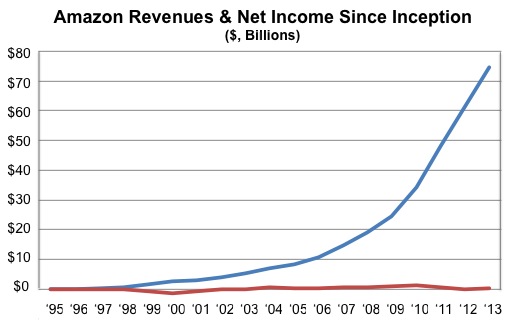
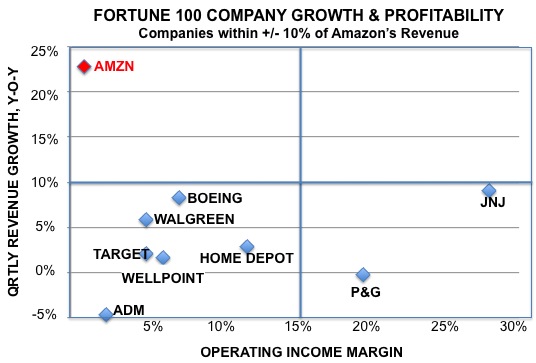
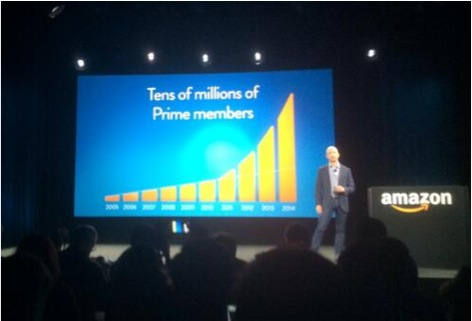

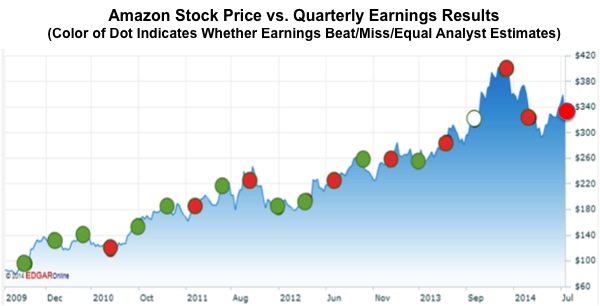
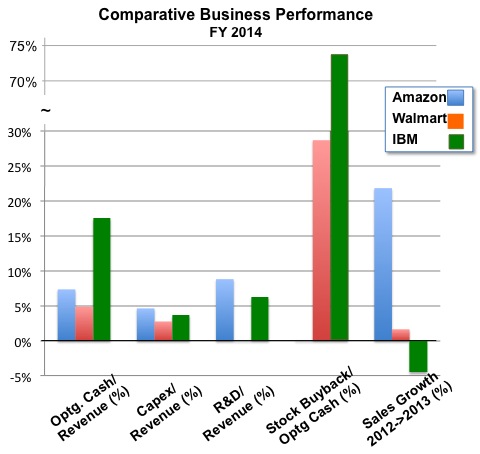
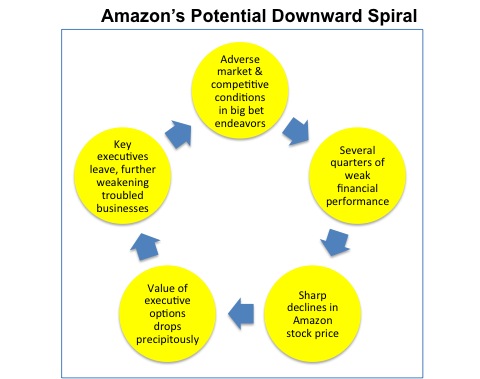
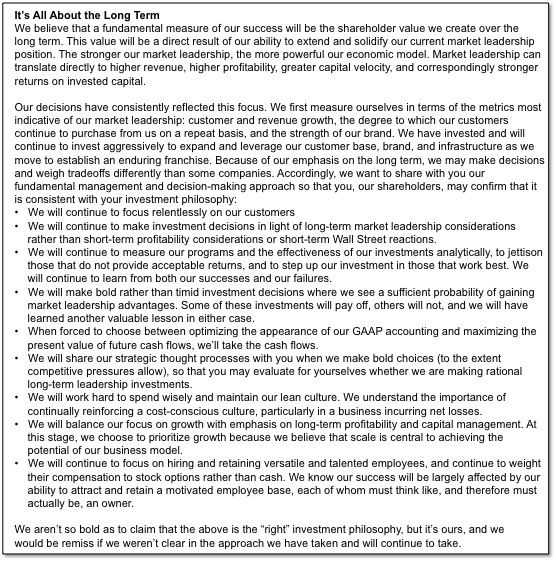

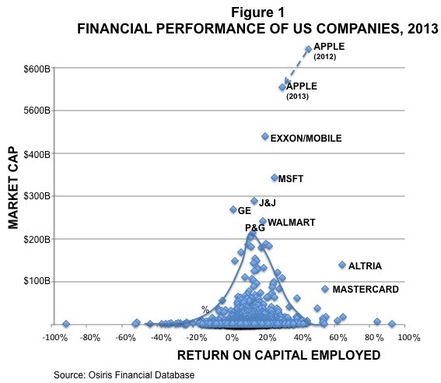

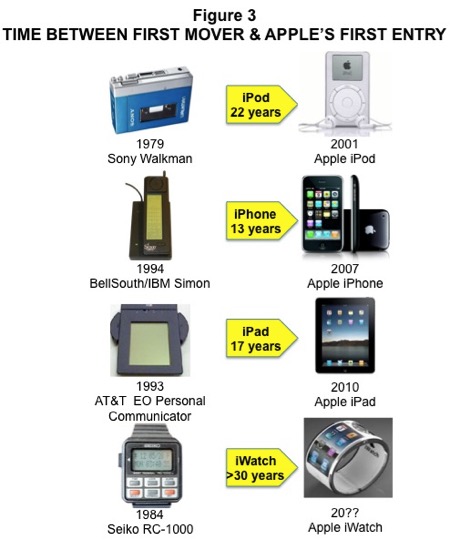
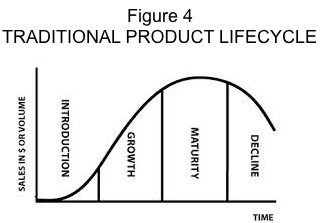
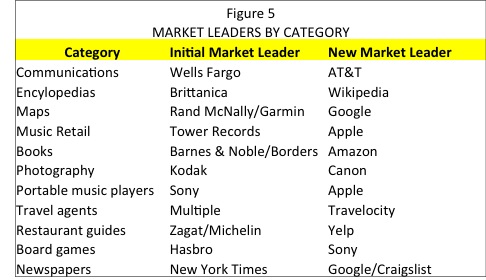
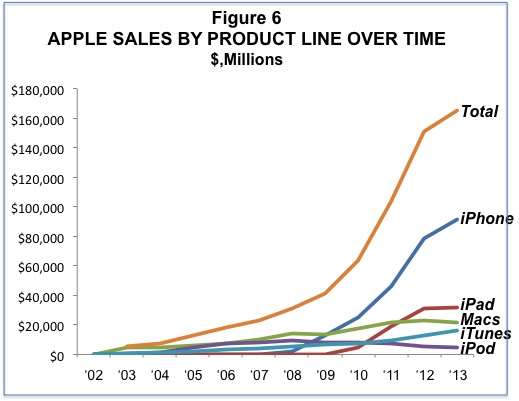


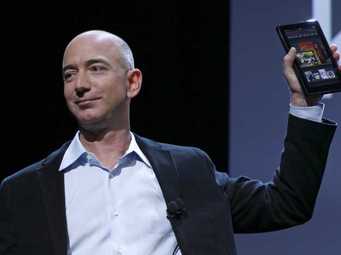

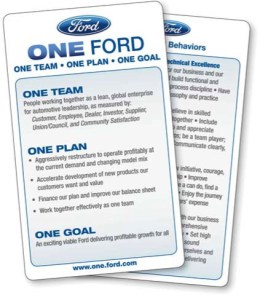

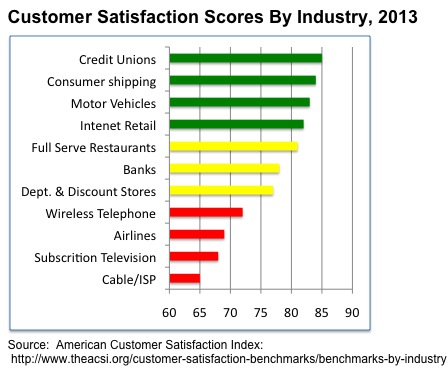
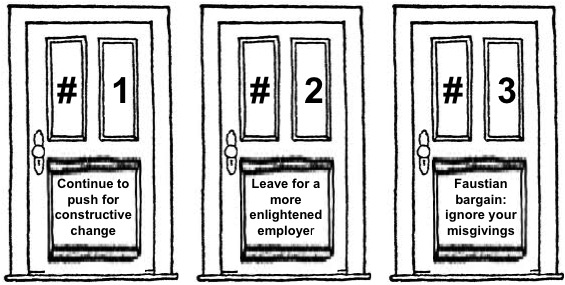


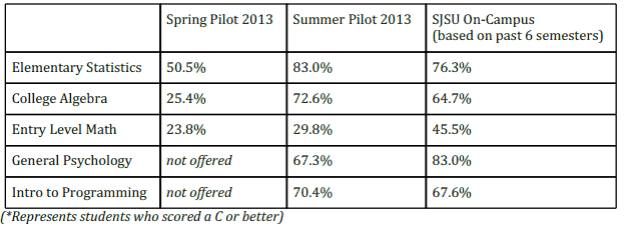
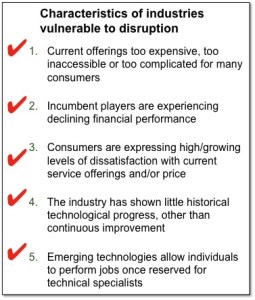
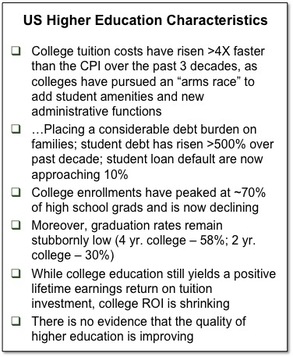
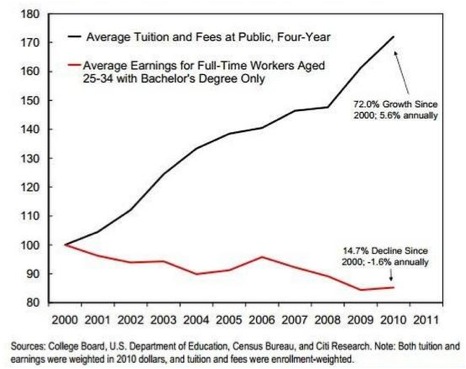
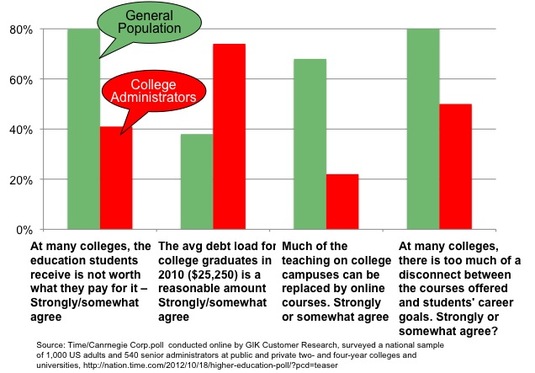



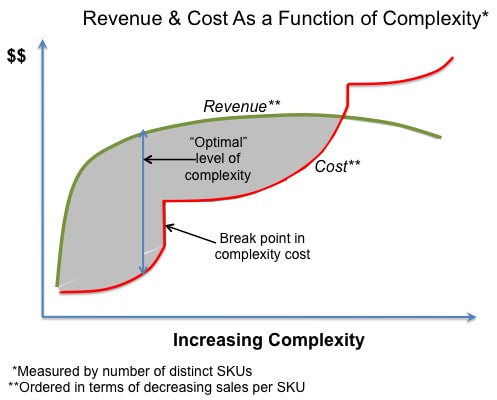

 RSS Feed
RSS Feed